
Adventure Travel Churchill Polar Bears
“Saving The World - One bear at a time.”
Quote Source – The Museum Curator
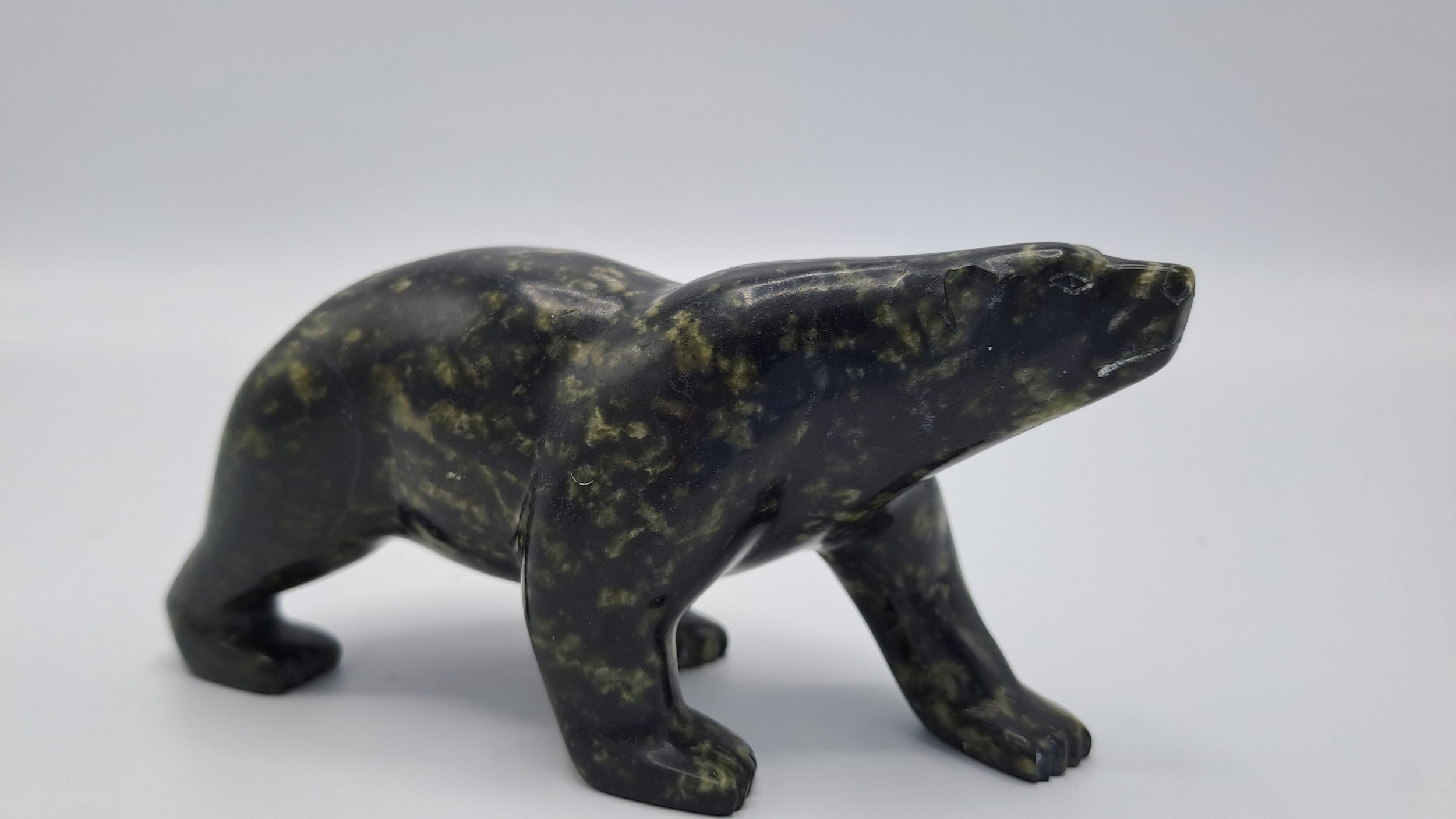
Small soapstone carving of a polar bear Dorset Culture - carved by Jimmy Iqaluq Sanikiluaq. Bought Hudson Bay Churchill. Did you know polar bears actually have black skin, an evolutionary tactic to absorb more UV from the weak polar sun.

Antler carving of polar bear from reindeer antler. Churchill - Hudson Bay. Not signed. We love the way that the artist has used the shades of antler to give light and dark.
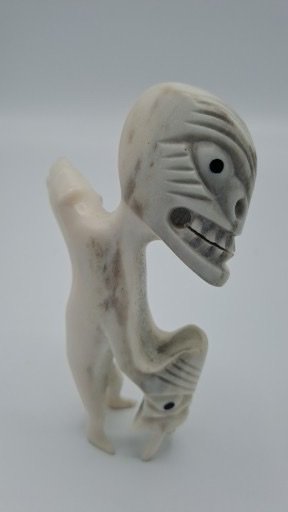
Shaman grotesque from the Dorset Culture. Zoomorphic creatures of shaman story telling.

Inuit figure in granite and beadwork Dorset Culture - Hudson Bay Manitoba Canada. Unsigned.
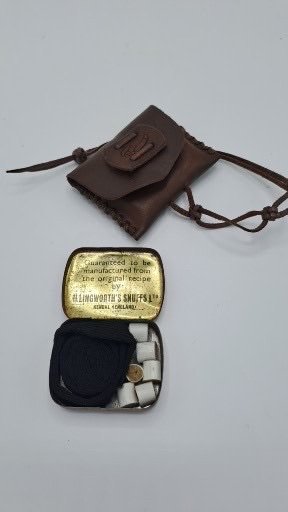
Fire starting kit in leather "possibles" pouch with period tin. Trapper or outdoorsman.
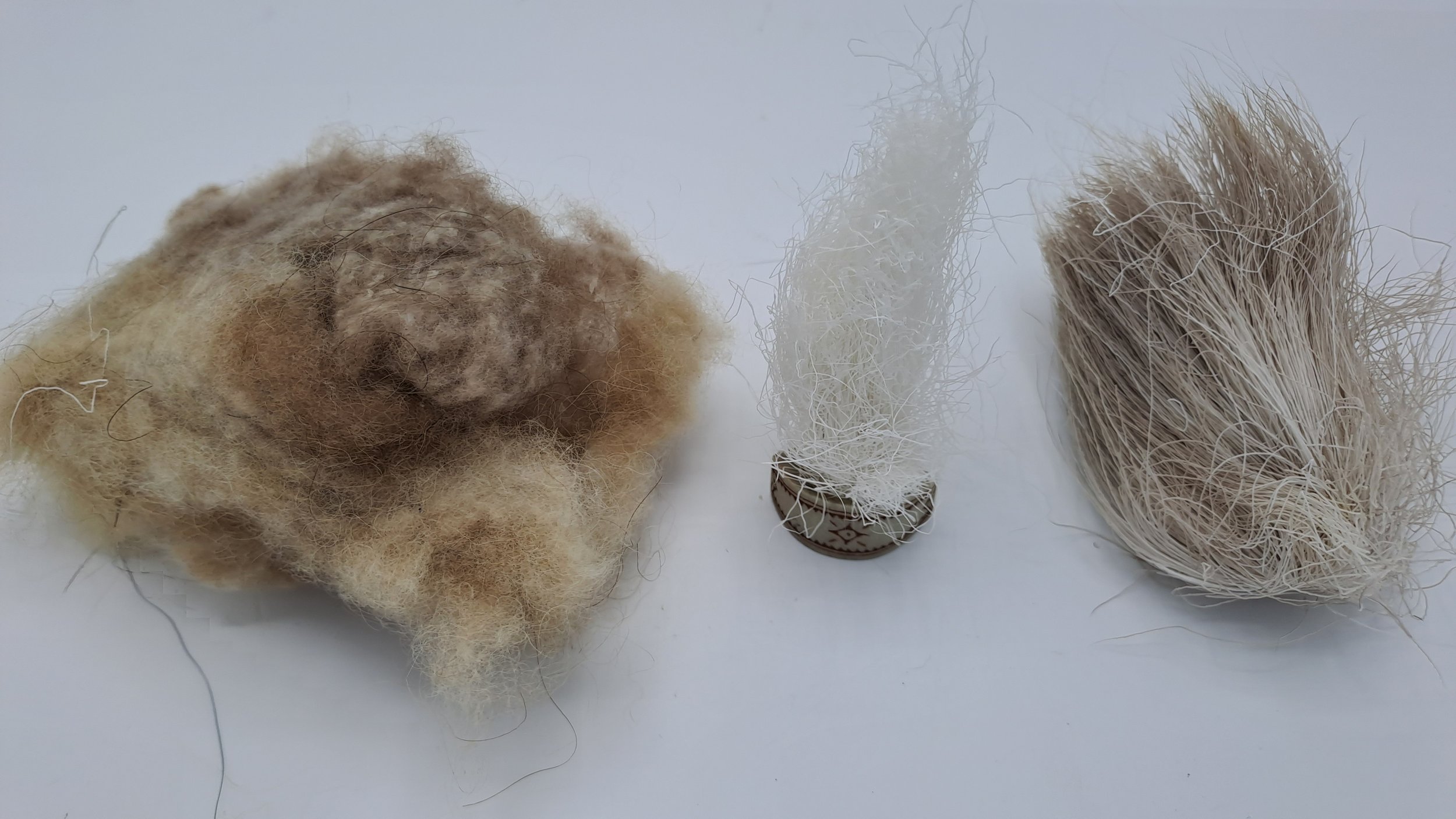
Arctic Animals left to right Musk Ox Artic Fox and Reindeer. You may spot the middle one, the Arctic Fox in Churchill. You won't find a Musk Ox in Churchill - head to Greenland for the best chances of seeing these magnificent animals.
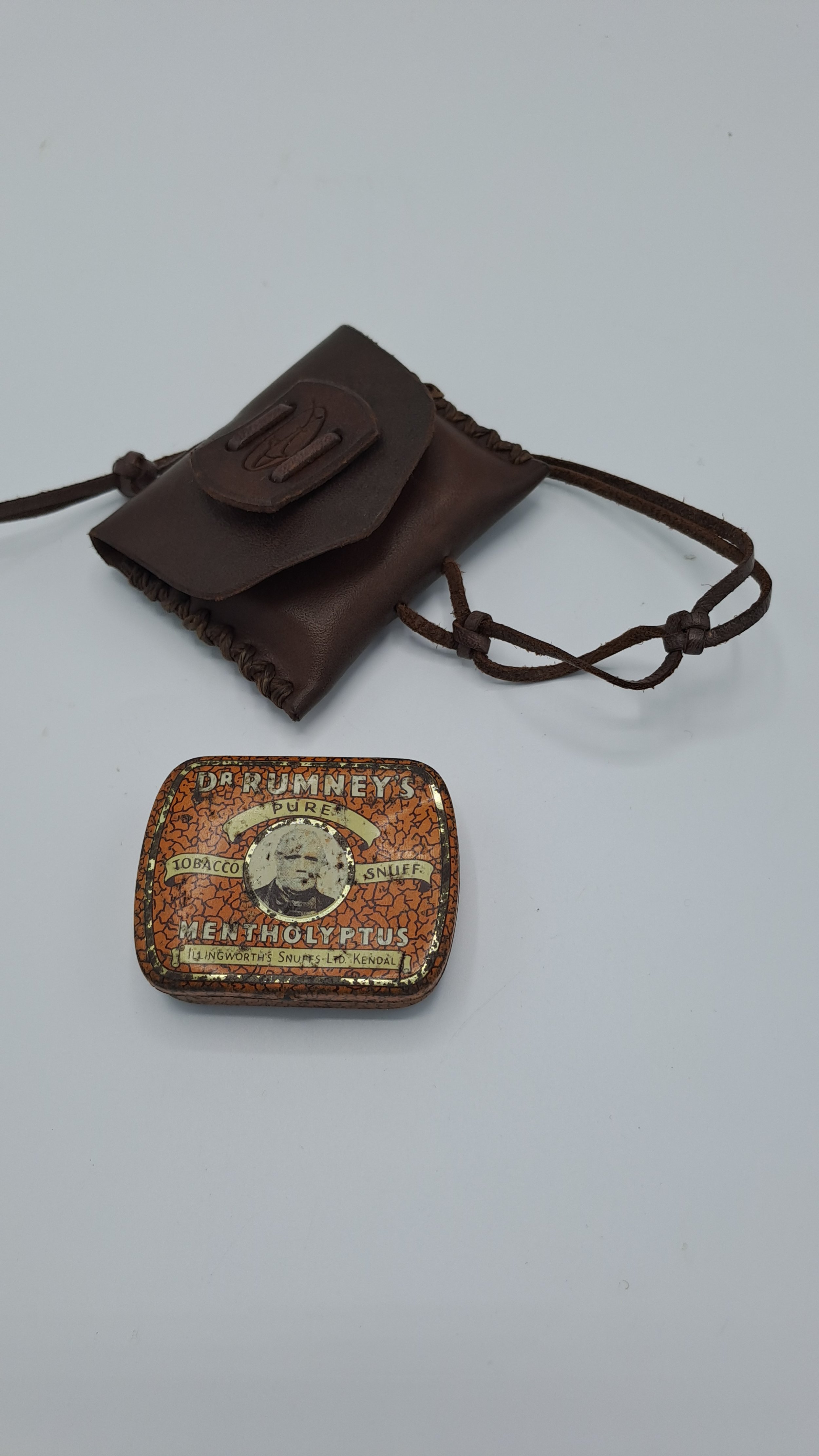
Leather possibles pouch (held everything you needed). Small period tin.
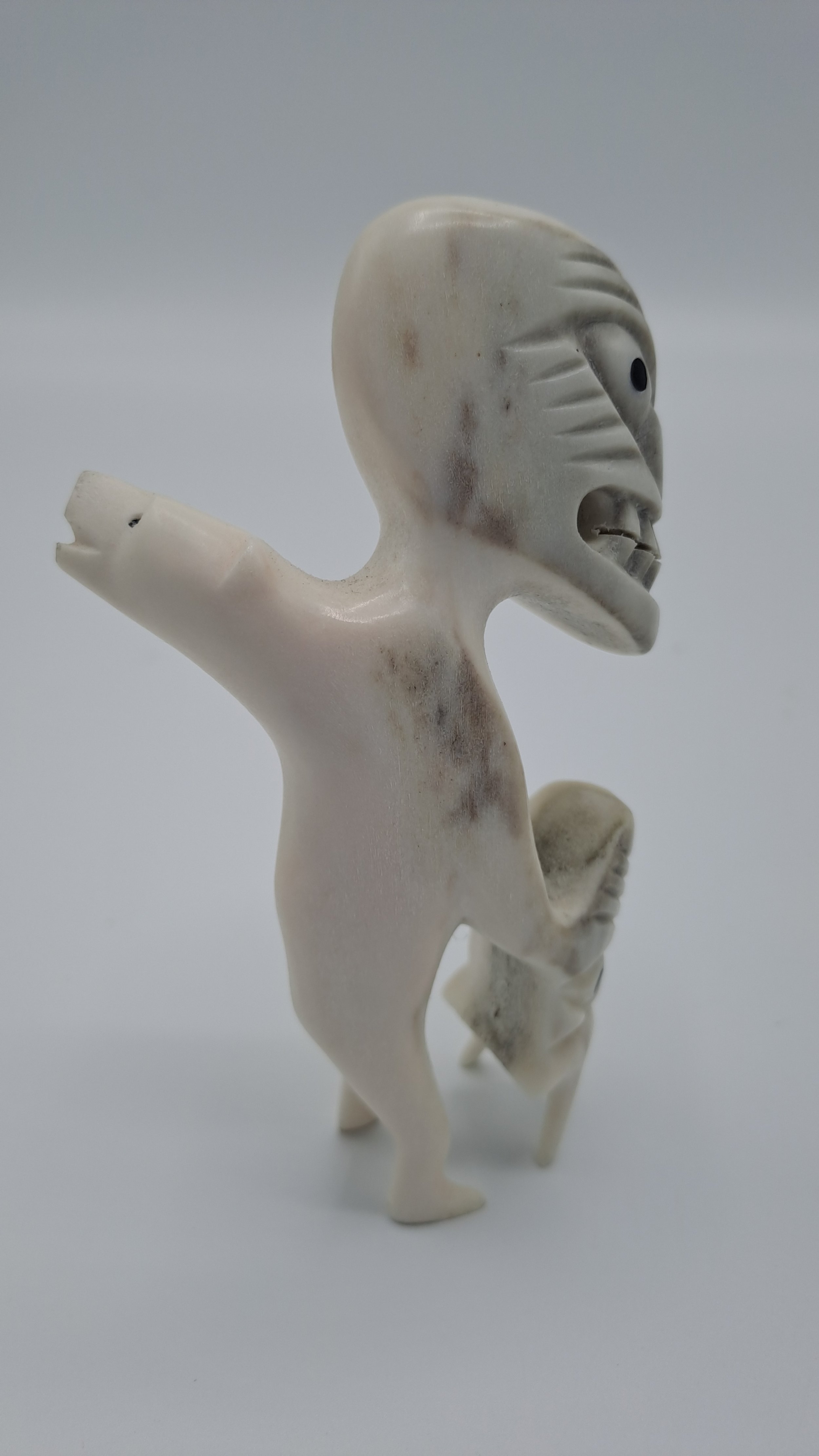
Zoomorphic Shaman Polar Bear carving.This is a typical example of a polar bear fusion on his back. Probably from North Greenland.
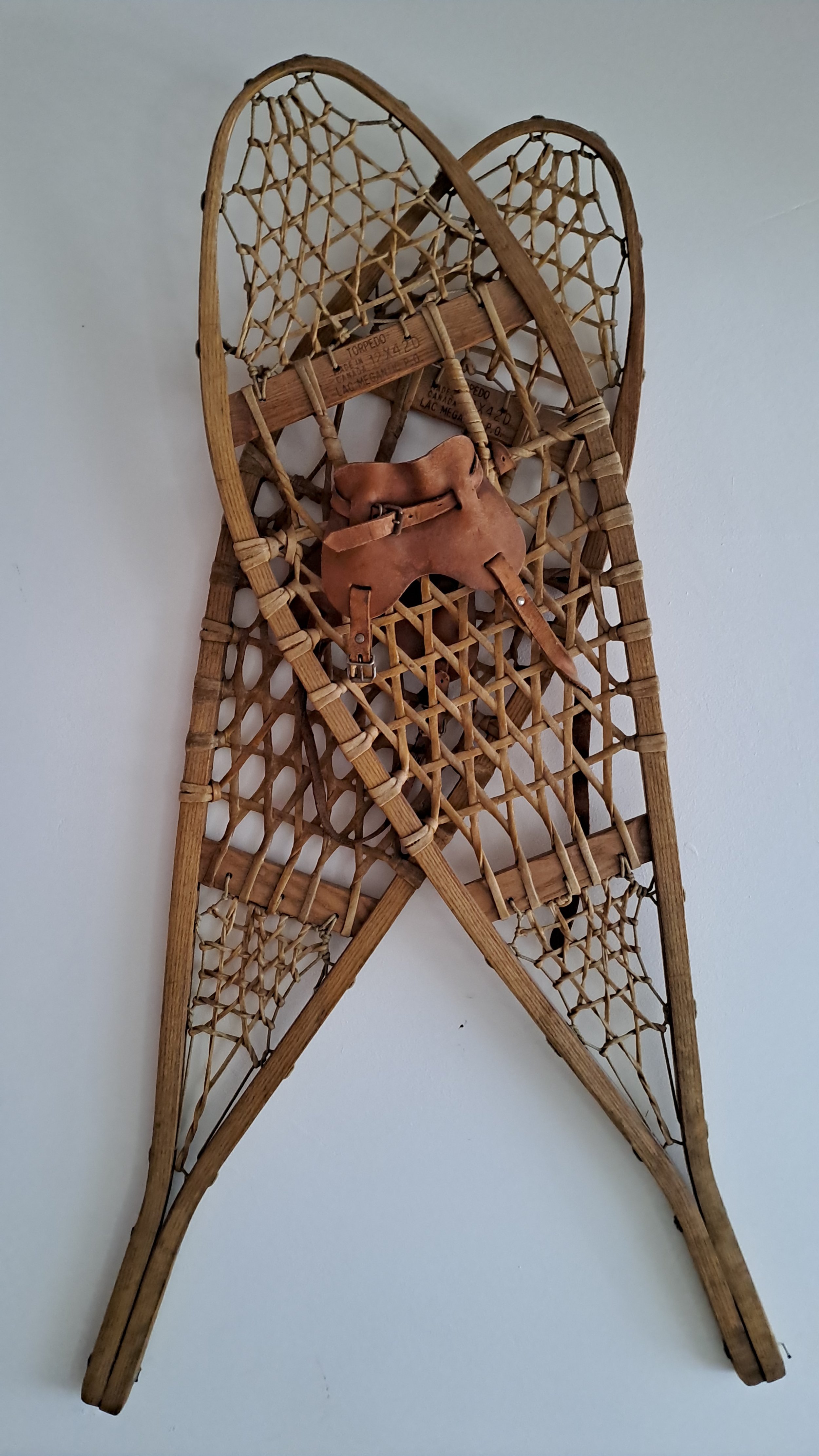
Period "Torpedo Type" snow shoes - sinew cord, leather and wood. Canadian.

Polar Bear scenting the air - they have a superb sense of smell and can smell a seal in its breathing hole from 30km (20 miles) away. They are a true marine mammal and are capable of swimming for miles, one bear was tracked swimming over 100km.
Churchill - Hudson Bay Canada Manitoba
When we visited the Polar Bears at Churchill it was probably the most excited we have ever been! Churchill was a one horse town, although I doubt there are actually any horses there on account the of the bitting cold and polar bears. We have seen many polar bears in the wild, swimming, feeding on a Minke Whale carcass and even more hung on washing lines air drying in the thin Artic sun. In fact we have seen more dead than alive, victims of mankind’s need to kill and make money.
The bears at Churchill have a land phase which is typically from July to November when as many as 600 to a 1000 bears mainly males, gather for the long walk north. It’s the largest gathering of Ice bears anywhere in the world. On our visit we saw more bears here than on all of our combined trips to the rest of Arctic put together. So if want to see a bear this is a great place to do so. A polar bear can huge distances, as much as 20,000 sq. miles in a year. Breeding takes place on the sea ice, not on land. The rest of the year they live, breed and den on the ice.
The saying of saving the world one bear at a time comes from our environmentalist days, when frustrated at the lack of progress our Portuguese colleague was getting angry. We coined the phrase based on a little boy who was throwing starfish back into the sea after a big storm, and a man said “what are doing, there are thousands of them, you won’t make a difference”, and with that the boy threw another star fish into the sea and said “ well it made a difference to that one.” It made us cry. Maybe we can’t “save the world” but we can make a difference even if it’s saving one starfish, or one polar bear. Visiting the Polar Bears helps protect them as without tourism there is a good chance many of they them would end up on washing lines, like other parts of the world, waiting to be sold as “souvenirs.” Bear skins look best on the bears!
We visited them on a giant 4x4 raised up Tundra Buggy’s and this was our first encounter of these magnificent marine mammals. That’s right they are marine mammals Ursus maritimus, and equally at home in the water with semi-webbed feet and powerful swimming ability. They can get pretty big too, with the largest male recorded at over 12 ft tall and 1000kg+. The buggy’s have balloon tyres to minimise ground pressure and damage to the fragile Tundra.
The bears are apex predators of their world and are efficient hunters, and that is what they are all doing in Churchill, waiting for the ice to come so they can hunt for their favourite food - seals. They are omnivores like most bears and will pretty much eat anything, but they need huge quantities of fat and blubber to survive so they are predominantly carnivores. They use the pack ice to drift back down South and then step ashore waiting for the big freeze again.
We saw them eating seaweed and crabs on the beach, and “bad bears” down on the waste dump. More like “bad humans” it could easily be made bear proof, (it now has) and we could be a lot less wasteful. We also saw bears being “airlifted” in big cargo nets from helicopter, a mother and cub, having spent the night in polar bear jail, following an excursion to the dump.
The bears we saw in Churchill looked in really good condition, with fur that look like they’d spent a few hours at the beauty parlour, compared to other bears we have seen in Greenland and Nunavut. Obviously a tougher life. You have to remind yourself that these are seriously dangerous animals who will kill you, so take care when you are wandering around town particularly at night. We have had encountered Polar Bears less than 30km from Ice Camp Barneo itself not far from the Geographical North Pole, in -46c, they have serious endurance.
Churchill is also a great place to see Ptarmigan, Artic Fox and other Arctic species. Our trip was arranged from a Banstead (England) specialist tour operator called “Discover The World” it was not cheap, but is was quality and they put together a special itinerary for us, which included Orcas in British Columbia, the Forks ancient meeting site in Winnipeg and Polar Bears in Churchill. They have been bought by another company since we last used them.
-
This is the safest way for both human and bear to get up close and personal. You will never get this close to a bear in the wild in any other place. If you did you would be in serious danger.
-
They are of course many of species to keep you amused, birds, including the superbly camouflaged ptarmigan in their white suits with furry legs and feet - like little slippers. Arctic Hares, (these are huge), Snowshoe Hares, Arctic Foxes and Moose. In Europe we call a Moose an Elk. You may even seem Ermin (Mink) and very rarely (we’ve never seen one) a Lynx. The Snowshoe Hare as its name suggests has massive hind feet to stop it sinking into the snow, supremely adapted to its environment.
-
Like all information it is time dated, but when we visited it was a small town, a few hotels and bars and lovely feel about it. Crisp and cold in its winter clothing.
-
One of the interesting things about travel is different tribes, peoples and cultures.” Eskimos” as we used to call them is now considered a derogatory term. Inuit just means of the people. The Inuit and the Yupik peoples are made up of many different tribes. The Iñupiat of northern Alaska, and groups of Inuit in Canada, and the Greenlandic Inuit.
-
One interesting fact is that Polar inuits have dark skin, yet all the other peoples living north have white skin an adaptation to allow absorption of the sun to absorb vitamin D. This is probably part because it is cold and dark most of the year in that being clothed or indoors would not allow absorption of vitamin D from the sun. Inuits derive their vitamin D from a diet rich in sea food, so this adaptation to a white skin was not needed.
-
They projectile poo - how do you think they keep that white (yellowish) fur white. We saw them eject matter about 2 to 3 meters or more, so don’t try to creep up on one!
-
They have black skin and translucent fur.
The bears at Churchill use ice flows to get around arriving in July as the ice drifts to the southern shore where they step off an go inland.
They can each huge amounts of food in one sitting which they convert to fat to live off. In one experiment a 100kg of lard was left out, and one bear ate the lot.
They have a very developed sense of smell, and you can see them sending the air. A Polar Bear can smell a seal from over 20 miles away. They can allegedly even smell a seal under the water in up to 3ft of ice.
They have massive 12 inch forepaws and hair on their paw pads to stop them slipping.
Polar Bears have been spotted up to a hundred miles inland although they normally stay close to the shore.
In Svalbard we have been told stories where they put their paw over their black nose to hide? But we have never seen any evidence of this.
-
The change in climate has lead to more encounters with Polar Bears and Grizzly bears. Pizzly bears are hybrid Polar bear male and female grizzly bears. DNA has proven they can and do inter breed. A Grolar is a male grizzly and female polar bear. There is some thought that the legend of big foot / the Sasquach might be just such an animal. Polar Bears stand up when threatened and would look very different to what people would be used to seeing. What do you think?
What we Loved
What we didn’t Love
-
They are a necessary evil in that you want to see the bears but not in this way. Unfortunately this is probably the safest way for them and us. They would kill you if you were on foot and they would then probably get shot as well. The height of the buggy makes it difficult for the bears to “get you” But they still could, so don’t be stupid about it and put yourself, the bears and others at risk.
We heard stories on the buggy of bears hiding under the stationary buggy and trying to grab whatever was sticking out - one woman loosing her wedding ring as the bear bit down on her hand as she tried to get a close up photograph. Could have been a lot worse for bear and woman.
-
October and November is when the Polar Bears gather. It feels like a very historic meeting, a gathering of the clans as they wait for the ice to freeze over. I guess it is also a stressful time for them and dangerous with so many animals in one place, big males and mothers with vulnerable cubs. Huge male bears spoiling for a fight and will kill cubs as well. But it also seemed like there was also a lot of restraint on the bears behalf, an understanding of why they were there, and they were probably very hungry as well, waiting for lunch in the form of the Ring Seal to arrive, or at least them being able to get out to lunch. It felt a bit intrusive.
-
The infamous dump was closed shortly after our visit, so well done municipal council. It was not just because it must be an unhealthy diet for them, but the risk of injury from glass, metals and ingestion of plastics and the like. It also brings bears into close proximity of each other and risk of fights and clashes. Mothers with cubs are always at risk.
Plastics can cause animals to starve as they think they are full (full of rubbish) or block. their gut, let alone the long term risk to them.
-
Apart from the things we didn’t like, we loved its all. Churchill is called the Polar Bear capital of the world and if you want to guarantee to see one, then this is the place to go. It hard to see them in other wilderness places and often it is either at distance or off the back of a Zodiac. (an inflatable boat often used by expedition cruises). There are more polar bears than humans in Svalbard 4000 but we have never seen one there. Svalbard Spitsbergen is a great place to see Walrus and you can find them on Poolepynten headland hauled out on the eastern coast of the Prins Karls Forland. But if you want to see Polar Bears up close and personal (so to speak) Churchill is the place to go.
-
The range of art and carvings is spectacular, not cheap, but we wish we had “acquired” more, both to display in the museum and to support the local community and Inuit communities as well.
-
Although this is the furthest south Polar Bears get, it can still be quite chilly. They are not called Polar Bears without good reason. It can get cold in Churchill in November (how else will the sea ice freeze over) and can get below -16c. although -8c is more normal for this time of year. We wish we had taken better boots. A pair of Sorrel or Artic Muck boots would have have kept the feet warm. Nothing worse than cold feet.
What we would do differently
-
A small green soapstone carving by the renowned First Nation artist Jimmy Iquloq. Jimmy is renowned for carving Loons, or Great Northern Divers as we know this magnificent bird. There are also Red Throated Divers and we have seen these on remote lakes in the mountains, as well at this. This dark green soapstone carving came from Churchill. When you see it next to a real bear you realise how the artist has captured the essence of the mighty Polar Bear.
-
Another one of our Churchill acquisitions, this small but perfectly formed statue is grey in colour with a beautiful bead body in white, red, blue, and green.
-
Trapper style period snow shoes with gut strings and leather attachments. Made in Quebec, these vintage 1940’s 50s Torpedo type snow shoes are perfect for getting around on soft snow. You can get up to quite a speed on them. More modern metal framed ones are easier to use and weigh substantially less, as well as being easier to put on.
-
Musk Ox and Arctic Fox fur and Reindeer Pelts.The Yak and Arctic Fox fur we found on the ground, and the pelts are from animals slaughtered for meat. Reindeer meat is high in protein and low in fat, and is a staple diet in the Arctic. Reindeer roam free and are as organic as it possible to get. The Musk Ox fur is incredibly soft and insulting - it needs to be for them to survive harsh winters. You won’t find Musk Ox in Churchill but you might spot an Artic Fox. Greenland and Nunavut (Islands) are the best place to spot Musk Ox.